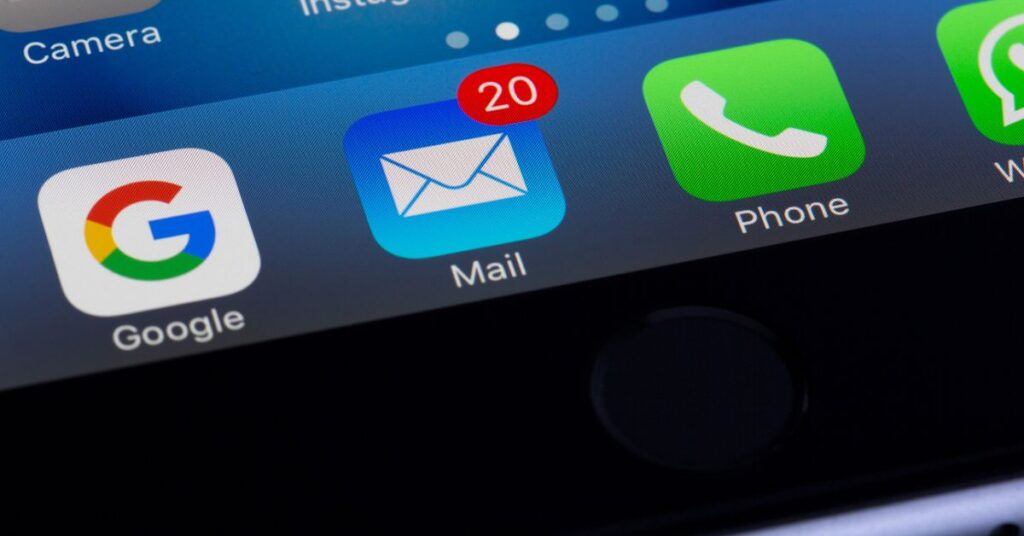By: Bec Harris
In the age of smartphones, social media, and tracking apps, digital boundaries are more important than ever. But what are they, and how do we know if ours are healthy?
Doug spoke with Karina Chapman, dating and relationships coach and founder of Aligned Connections to unpack how couples can set respectful boundaries around digital spaces and what to watch out for when things go too far.
A New Kind of Boundary
“Digital boundaries are still fairly new for all of us,” Karina said. “We’re used to physical and personal boundaries, but this is a different space.”
These boundaries define what’s okay, and not okay when it comes to tech in a relationship. For example, should your partner have your passwords? Can they track your location? Should they ask before posting your photo?
What the Stats Say
Some digital boundaries are widely accepted. “About 70% of people expect to be friends with their partner on social media,” Karina shared. “That’s fairly normal.”
Other behaviours are more divisive:
- Taking your photo without asking? Less acceptable.
- Sharing passwords? Not common.
- Tracking your location? “Only 13% thought it was okay,” Karina said. “Usually among people in their 20s.”
Why? Many younger people grew up being tracked by parents for safety. So location sharing can feel familiar, even affectionate.
When It’s Helpful vs. Harmful
Tracking isn’t always a red flag. Sometimes, it’s practical. “My wife was on a run,” Doug shared. “I needed to find her to pick her up. In that case, it was helpful.” Karina agreed: “If you’re overseas and get separated, it can be a great tool. It’s how you use it that matters.”
But when tracking becomes constant, and without consent, it crosses a line. “If someone’s watching every move and questioning your choices, that’s not support it’s surveillance,” Karina said.
From Support to Surveillance
The difference lies in intent and communication.
“A supportive partner might ask, ‘Did you get home safe?’” Karina explained. “But surveillance is more like, ‘Why were you at that place when you said you were somewhere else?’”
She emphasised, “That crosses into a space where it can feel suffocating. And that’s not healthy.”
You Still Deserve Privacy
Even in a loving relationship, you’re allowed to have privacy. “Some people think love means giving all of yourself,” Karina said. “But we’re allowed personal space digitally and physically.”
That means you don’t have to share passwords, post everything online, or accept being tracked if you’re uncomfortable. “If someone is guilting you into it, trust your gut,” she said. “That could be a red flag.”
Talk About It Early
If you’ve had a bad experience in the past, talk about digital boundaries from the start. “Ask your partner how they feel about it,” Karina advised. “You’ll quickly see if you’re on the same page.”
Even for couples who’ve been together for years, it’s a worthwhile conversation. “For older generations, this tech is new. We didn’t grow up with tracking,” the host reflected. “Now it’s just what we do but we have to be careful.”
Normalise the Conversation
Karina said younger people often see tracking as a sign of affection. They grew up sharing locations with parents and friends.
“It becomes normalised,” she said. “Then when a partner does it, it feels like a commitment. But it could also be coercion.”
So how do you draw the line? “Healthy boundaries mean everything’s optional,” she said. “Nothing should be expected without conversation and consent.”
Final Thoughts: Trust Your Instincts
Feeling unsure about sharing access to your phone, photos, or location? Listen to that. “If it makes you uncomfortable, that’s enough of a reason to pause,” Karina said. “You’re entitled to feel safe and respected.”
Digital tools can build connections, but only if both people agree on how they’re used. As Karina put it: “When boundaries are clear and mutual, you build a stronger, healthier relationship.”
Listen to the full conversation below.
Article supplied with thanks to Sonshine.
Feature image: Canva





